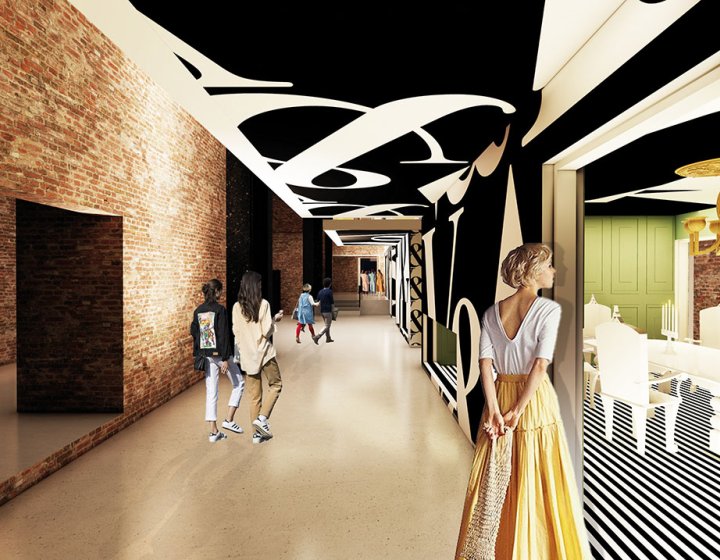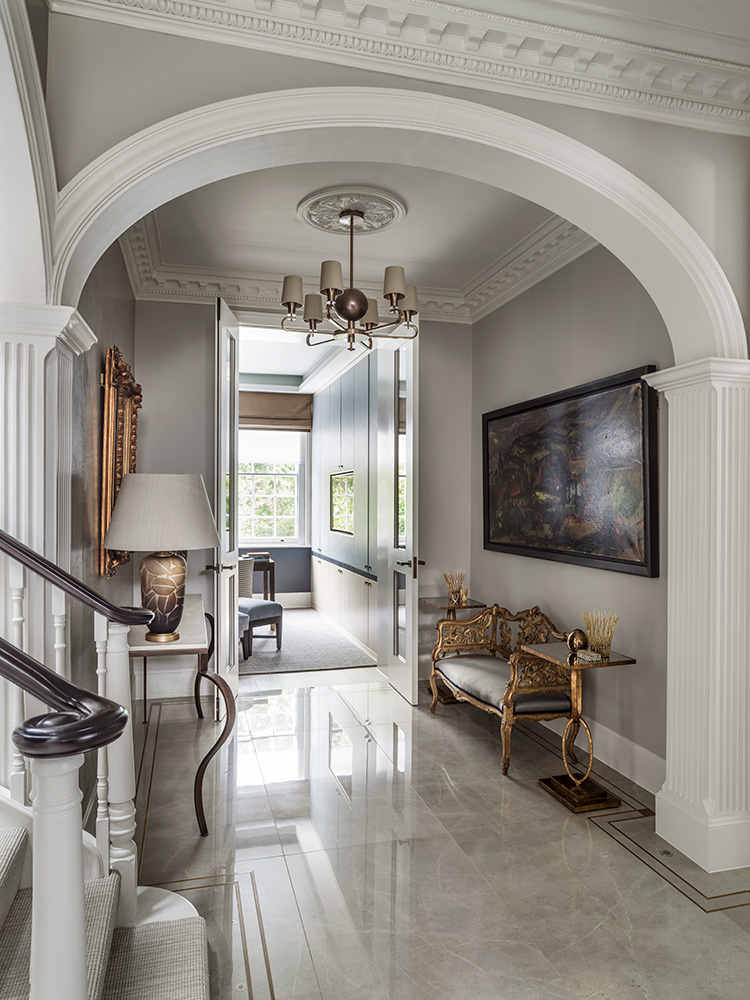Maximizing Visual Appeal: The Harmony In Between Interior Design and Home Architect Methods
Understanding the subtle interplay between interior decoration and home architecture can considerably elevate the aesthetic allure of a space. This marriage of style disciplines involves a thoughtful combination of building aspects with indoor layouts, and a competent application of concepts such as rhythm, contrast, and balance. As we discover this synergy, we will reveal ways to create useful and visually striking environments that not just reflect personal design, but also adjust to the dynamic demands of modern living.
Recognizing the Basics: Specifying Interior Design and Home Architecture
Interior decoration and home style, frequently intertwined, stand for the visual and architectural elements of our living areas. Interior Design is a multifaceted discipline that entails developing functional, risk-free, and visually pleasing spaces inside a structure. It includes components such as furniture arrangement, color coordination, and accessory option. On the various other hand, home architecture largely concentrates on the strong structure of a structure. It involves creating a useful and cosmetically pleasing framework that stands the examination of time. It includes elements such as room building and construction, sustainability, and planning. Both fields need a deep understanding of human actions, society, and psychology. Each plays an important role in shaping our living settings, contributing to our general comfort, efficiency, and well-being.
The Harmony Clarified: Exactly How Interior Decoration and Home Style Intersect
Recognizing the harmony in between indoor style and home design can unlock a world of imagination and capability. When discussing this intersection, the influence of design on insides is an essential aspect to consider. This discussion will concentrate on the unifying design concepts that blend these two fields into a harmonious whole
Unifying Layout Principles
While it may seem that interior design and home architecture are two distinct disciplines, they are really deeply interconnected, forming a harmony that is crucial for producing harmonious home. Unifying style concepts are the columns that facilitate this symbiosis. The concepts consist of equilibrium, rhythm, emphasis, contrast, and harmony. These elements integrate to provide a cohesive visual appeal. Balance develops a sense of security, rhythm supplies a feeling of motion, consistency guarantees unity, contrast triggers passion, and focus attracts attention to crucial elements. The calculated application of these concepts enables a smooth mix of aesthetic appeals and function, improving the total experience of the space. Essentially, these principles serve as the bridge, joining indoor layout and architectural methods.
Building Influence on Interiors
The intertwining of interior layout and design becomes even extra evident when one takes into consideration the building impact on insides. Building components are innate to a space's functionality and visual appeals, shaping the layout from the beginning. Their synergy is hence obvious: design develops the structure, which indoor design boosts with structure, design, and color.
Secret Principles in Harmonizing Interior Design and Home Architecture
Striking an equilibrium between functionality and appearance is a fundamental element of balancing interior decoration and home architecture. An equally vital concept is the integration of sustainable design to produce environmentally friendly and energy-efficient homes. Lastly, understanding and discovering numerous architectural styles can additionally play a crucial function in attaining a harmonious design.

Stabilizing Capability and Aesthetic Appeal
Stabilizing performance and looks in interior design and home style emerges as one of the critical concepts to consider. Visual appeal uplifts the state of mind and affects the perception of space, whereas capability guarantees usability and convenience. Just as crucial is the reliable arrangement of the room, with a well-planned layout adding dramatically to the harmony in between functionality and appearances.
Lasting Layout Integration
In preserving the equilibrium in between capability and looks, one need to likewise take into consideration the assimilation of lasting design concepts. This technique not only improves the visual appeal of an area yet additionally ensures its durability and reduced environmental effect. The crucial lies in selecting products that are environmentally friendly, long lasting, and appealing. This includes natural, recycled, or low-impact products that add to a healthier and more lasting world. Architects and designers can additionally incorporate energy-efficient systems, such as energy-saving home appliances or solar panels. Making certain good indoor air quality through adequate natural lighting and ventilation is important. For that reason, an unified blend of interior decoration and home architecture, directed by sustainability, can create spaces that are beautiful, useful, and environmentally pleasant.
Discovering Architectural Styles
While there are a plethora of architectural styles to check out, it is crucial to understand that every one lugs its unique concepts that can dramatically affect the harmonization of interior decoration and home style. These styles, varying from the ornate Baroque to the minimalist Modernist, bring unique approaches and appearances that, when properly comprehended and made use of, can develop homes that are not just visually stunning yet likewise sympathetically integrated in regards to layout and style. Picking an architectural design is not simply about individual visual choice; it has to do with selecting a design language that talks to the property owner's way of living, approach, and goals, creating a home that is a real representation of its citizens.
Case Researches: Extraordinary Instances of Design and Architecture Harmony
Exploring some phenomenal study resource provides a profound understanding of exactly how style and style can harmoniously merge to create functional and engaging spaces. The legendary Fallingwater residence, created by Frank Lloyd Wright, exquisitely shows this harmony. Wright's style masterfully incorporates your house with its surrounding landscape, while the interior mirrors the exterior's organic types. Another instance is the minimalistic Tadao Ando's Church of Light in Japan. The designer accomplished a best equilibrium in between simpleness and dramatization, utilizing raw concrete and light. Internally, the plain, minimal style produces a feeling of tranquility and spiritual consideration. These instances highlight the importance of harmony in between indoor layout and architecture in accomplishing visual and functional success.
Practical Tips: Enhancing Your Home's Visual Allure
Drawing click here to find out more inspiration from the study of building and layout harmony, homeowners also can execute some useful methods to increase their home's visual charm. A harmonious blend of colors, textures, and illumination can enhance a space, producing a cozy and inviting environment. Deciding for furnishings that complements the architectural elements of the house can cultivate a feeling of unity. Wall surface art and style pieces can add personality, mirroring individual design and preference. Including plant, either via interior plants or sights to the outdoors, can bring an aspect of nature, providing a calming impact. Smart use of mirrors can open an area, providing an illusion of a larger location. Inevitably, the aesthetic charm depends on stabilizing functionality with design, developing a home that is both comfortable and attractive.

Future Trends: How Modern Techniques Are Altering Interior Design and Style
As the world advances, so do the patterns in indoor design and design. Modern methods are progressively concentrating on sustainability, incorporating energy-efficient layouts and green products. These patterns show a shift towards layouts that are not simply visually pleasing, however additionally environmentally conscious, technologically advanced, and adaptable to transforming lifestyles.
Verdict
In final thought, the combination of interior design and home design techniques is a dynamic technique to enhancing aesthetic appeal. By leveraging vital principles like rhythm, comparison, and equilibrium, and integrating components of modern-day living, developers can produce versatile, like this aesthetically pleasing atmospheres. Through understanding this harmony, homeowners can make enlightened decisions that not only elevate their home yet also add to their overall health.
Understanding the subtle interaction in between indoor layout and home architecture can dramatically raise the aesthetic appeal of a living space.Interior style and home architecture, frequently linked, represent the structural and aesthetic facets of our living areas.While it may seem that interior layout and home architecture are two distinct disciplines, they are really deeply interconnected, forming a synergy that is crucial for developing unified living rooms.The intertwining of interior design and style ends up being also much more apparent when one takes into consideration the architectural influence on insides. An unified blend of interior style and home design, guided by sustainability, can produce rooms that are attractive, practical, and eco pleasant.